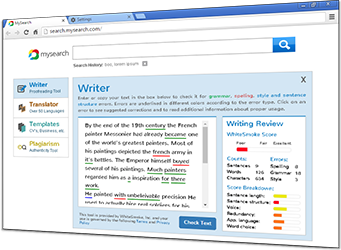Commonly Confused Words: Lay v. Lie
The choice is tricky. Native English speakers are often not sure about which is correct, and lay ends up overused when in fact lie is the correct choice.
The "lie versus lay" debate is particularly confusing, for 3 main reasons:
1.) Their spellings are similar, but not the same.
2.) Their meanings are similar, but not the same.
3.) The past tense of lie is the present tense of lay....
Recipe for a Grammatical Disaster!!
Not to worry.
The key lies in understanding what the words actually mean.
Once the meaning difference between lay and lie is understood, the spelling falls into place.
*Note: The word "lie" has two meanings. The one that concerns telling "false truths" is irrelevant to this discussion. You can lie about your age, people have lied about lots of things, and will continue lying in the future - but we don't care right now!
Let's stick to the issue.
>
Use this table as a guide if you get lost. But make sure to read about each tense's unique spelling. Might let things lie smoother in your head!
| Tense | Lie | Lay |
|---|---|---|
| Present | Lie | Lay |
| Past | Lay | Laid |
| Past Participle |
Lain | Laid |
Present Tense: Lie v. Lay
The The Gregg Reference Manual, 10th ed., defines the words as:
Lie = to recline; to rest; to stay.
This verb cannot take an object. (A subject performs the action on itself; you cannot rest a book)
I don't feel well; I might lie down for a few minutes.
Fido! Lie still!
Lay = to put or to place
This verb requires an object to complete its meaning.
To lay the book on the table.
Lay requires a direct object, and lie does not. What does this mean?
You can lay something down – a book, a baby, a pen - but you yourself will lie down.
The difference here is in usage. The meanings of lay and lie are very similar – both have to do with reclining/setting down.
The same concept applies to the past tense and past participle forms of the two verbs.
You simply substitute the past tense or past participle forms (lay versus laid; lain versus laid).
“lie” and “lay” have similar meanings with very different usages.
Past Tense: Lay v. Laid
The past tense of lie is lay.
The tiger lay on the ground.
The past tense of lay is laid.
I laid my hat on the shelf.
Past Participle: Lain v. Laid
The past participle of lie is lain.
The tiger has lain down.
The past participle of lay is laid.
The teacher has laid a book on the table.
Useful Expressions to Remember:
"Lie down" = rest (“lay down” is incorrect!)
Take lying down = to passively accept something
I will not take this pay cut lying down!
*A Memory Trick:
The Gregg Reference Manual offers a useful tip when trying to decide between lay and lie:
Substitute the word “place” for “lay” or “lie” in the sentence.
If place works, use "lay".
If place makes the sentence sound funny, the correct word is “lie”.
For example, you would not say "I'm going to 'place' down." You would go lie down.
But, to "'place' a pie on the table" works, so you can "lay a pie on the table" too!
REMEMBER: to place = to lay
Still Confused?
It's ok! It takes time!
Don’t Lay This Lesson in the Garbage! And Don’t Lie Down in Frustration!
Don’t worry if you don’t feel like you have a firm grasp on the difference yet. With practice and patience, you’ll start to become more comfortable with it. Besides, you’re already one step ahead of most native English speakers who don’t even give this much thought – so don’t stress too much about it!



